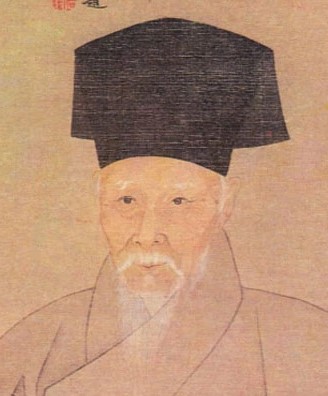
Shen Zhou (沈周, 1427-1509), courtesy name Qi'nan (启南) and art name Shitian (石田), was a distinguished painter in the Ming dynasty. He was the leader of the Four Great Artists of Wu and the founder of the Wu School. Born into a scholarly family in Suzhou, Jiangsu province, His greater father and his father never held government positions, in contrast to many intellectuals of their time, choosing instead to live reclusive scholarly lives. Shen Zhou followed their footsteps and gracefully declined an invitation to serve in the government. He received a comprehensive education from a young age under the guidance of his father and uncle, both of whom were accomplished in painting. He also learned from noted Suzhou scholars, such as Chen Kuan and Du Qiong. Shen devoted much of his time to travel, literary pursuits, and painting.
Shen Zhou was a master of landscape painting. The development of his style can be divided into three stages: Before the age of 40, he studied extensively and mainly followed the styles of Wang Meng, Dong Yuan, and Ju Ran, using fine and delicate brushstrokes to depict natural scenery. Then, he furthered his studies and learned more from the Yuan Master Huang Gongwang. His brushstrokes became broader and less restrained. At the age of 50, his style reached maturity, characterized by quick, bold strokes and simple, clear compositions, which became his signature style.
He was equally accomplished as a bird-and-flower painter and had a significant influence on the literati painting in this genre. His most distinguished student, Wen Zhengming, along with other later artists of the Wu School, contributed greatly to the rising popularity of literati painting.